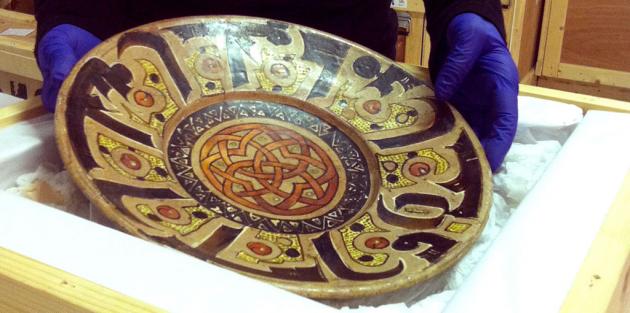The challenges are huge. The Aga Khan Museum in the central Canadian city of Toronto wants nothing less than to change people's perceptions of Islam, according to its website.
The museum, which is being touted as the first large art gallery solely dedicated to Islamic art in North America, "will foster dialogue and promote tolerance and mutual understanding among people".
Whether tomorrow or in a generation, its creators want visitors to learn about the contributions made by Islamic culture and art to world heritage.
Interest in Islamic art has grown enormously since the 9/11 terrorist attacks on New York, says Sheila Blair, professor of Islamic art at Boston College. "Islamic art doesn't mean Islamic art for or by Muslims and definitely not religious art," she says.
The broadest definition actually includes all art from countries where the majority of the population is Muslim. The Aga Khan Museum is showing around 1,000 exhibits from countries from southern Europe to Southeast Asia, and dating from the eighth to the 19th centuries.
The ceramics and pictures, textiles and books, musical instruments and miniatures were collected by Karim al-Husseini, the museum's founder, and his family. The 77-year-old businessman is also the spiritual leader, or Aga Khan, of the Ismailites, a branch of Shia Islam.
The new museum complex in Toronto, designed by the Japanese Pritzker Prize-winning architect Fumihiko Maki, also includes an Ismailite centre, with prayer and event rooms.
"The museum offers a good overview of Islamic art, but not a complete one," says Blair, though that could change with further additions.
Until now the Metropolitan Museum of Art in New York was the place to go in North America for Islamic art, even though its collection takes up just a fraction of its exhibition space.
"One of the lessons we have learned in recent years is that the world of Islam and the Western world need to work together much more effectively at building mutual understanding - especially since these cultures interact and intermingle more actively," says al-Husseini. "We hope that this museum will contribute to a better understanding of the peoples of Islam."
Blair believes this goal is achievable. "Art can give a more balanced view of Islam," she says, adding that Islam has been portrayed above all as a destructive faith over the past years. "Art shows its creative side."
source : nationmultimedia
Monday
8 December 2014
7:58:19 AM
656745

To change people's perceptions of Islam is the mission of a major new museum in Canada that will become a magnet for Muslim travellers.
